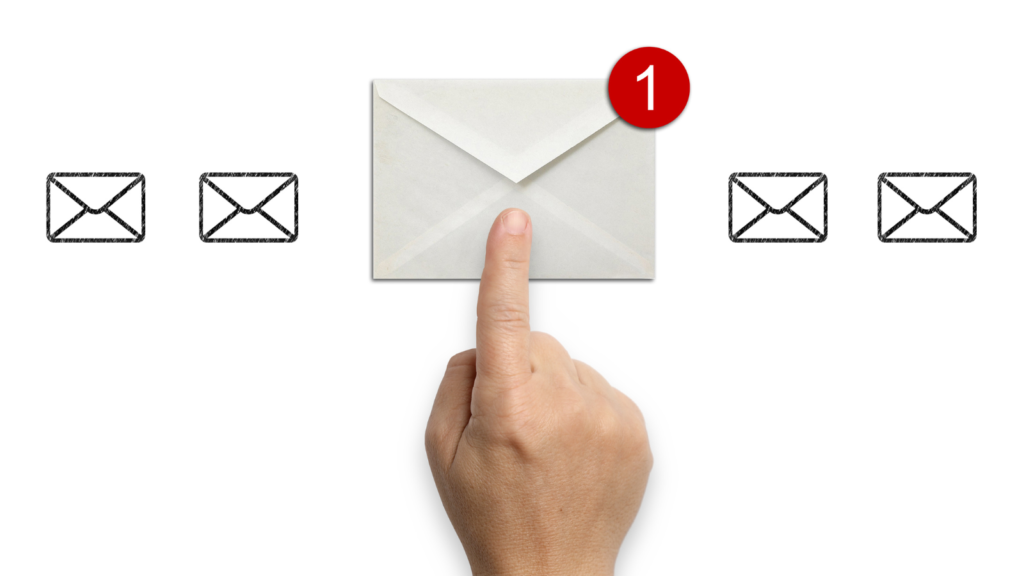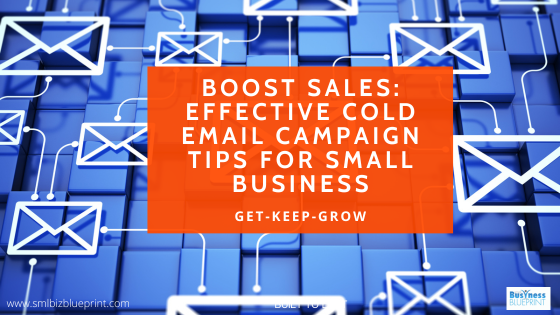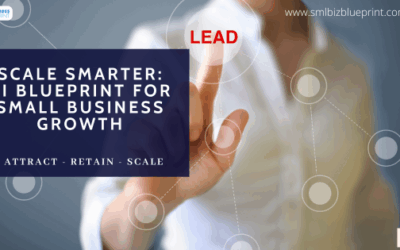In the fast-paced world of digital marketing, cold email remains a cornerstone strategy for business owners looking to expand their outreach.
It’s direct, cost-effective, and, when executed properly, incredibly powerful.

This guide will show you how to craft a cold email outreach campaign that not only garners attention but drives action and delivers tangible results.
Overview
Understanding Your Audience
Success in any cold email campaign starts with knowing exactly who you’re writing to.
Before crafting your message, clarity on your ideal client—their needs, challenges, and how your offering is the solution—is paramount. This knowledge shapes a campaign that feels less like a cold call and more like a warm handshake.
It’s not just about using the recipient’s name; it’s about reflecting their world to them in the email content.
Whether you’re a startup targeting tech-savvy entrepreneurs or a consultant for small businesses, your emails should demonstrate a deep understanding of your recipients’ daily hurdles and how your services make those challenges disappear.
As you hone in on who your ideal client is, you’re better positioned to map out the problem you solve or the desire you fulfil.
Every line of your email should reinforce that you’re not just looking for a sale—you’re offering a key to their specific lock.
Setting Clear Objectives and Nurturing Gradually
In setting objectives, be explicit about the intended outcome of each email.
Are you aiming to book a call, encourage a document download, or prompt a link click?
Your goals should guide the structure and content of your email with a CTA that seamlessly leads the reader to the next step.
However, it’s crucial to align your objectives with the nature of cold outreach.
Remember, a cold email is an initial touchpoint, not a sales meeting.
The aim should be to initiate a relationship, not to clinch a deal immediately. Build your campaign with gradual, achievable steps.
The first email might aim to spark curiosity and end with an invitation to a phone call or a webinar.
Subsequent emails can nurture that interest further, guiding prospects through the journey from awareness to consideration and, eventually, to the decision stage.
By incrementally nurturing your prospects, you increase the likelihood of eventually making the ‘big sale’ when the time is right.
Crafting the Perfect Length: Brevity Meets Persuasion
When it comes to cold emails, less is often more. Your goal is to pique interest, not to overwhelm.
A concise email that can be read in under a minute is ideal. Aim for 200-300 words as a sweet spot, ensuring every word serves a purpose.
This brevity forces clarity and precision in your language. Start with a compelling subject line, then get straight to the point in the opening sentence.
The body of the email should quickly communicate the value proposition and what’s in it for the reader.
Finally, wrap up with a clear call to action that leaves the reader intrigued and wanting to know more.
A succinct email also lends itself to a clean, uncluttered design that’s easier on the eyes. It encourages readers to read the email rather than skimming or skipping it.
Moreover, a shorter email performs better on mobile devices, where screen space is premium.
Remember, the objective of your cold email is not to close a sale but to open a dialogue. By keeping it short, you invite the prospect into a conversation, setting the stage for deeper engagement.

Key Steps
Personalization is Key
Next, we personalise. A “Dear Customer” is no match for a “Hello [First Name],” which already feels more engaging.
Go beyond names; mention recent achievements or reference specific pain points. This approach shows diligence in understanding the recipient, fostering a connection from the outset.
Value Proposition
What’s in it for them? That’s the question your email must answer concisely and effectively.
Whether it’s a unique solution to a common problem or an opportunity they cannot find elsewhere, ensure your value proposition is front and centre.
Crafting a Compelling Subject Line
Your subject line is your first impression.
In just a few words, you must pique interest and inspire the reader to open the email. “Boost Your ROI in 30 Days” or “Are You Making These SEO Mistakes?”—such subject lines promise value and evoke curiosity, which can significantly increase your open rates.
Social Proof and Credibility
People trust people. Including a brief case study or a testimonial can significantly boost your credibility.
For instance, “See how we helped [Company Name] double their lead generation in 3 months” immediately strengthens your claim.
A Clear Call to Action (CTA)
Now, direct them.
What do you want the reader to do next? Whether to schedule a call, download a whitepaper, or just reply, your CTA should be unmistakable and easy to follow.
For example, a button saying “Get Your Free Audit” is much more effective than a vague “Contact Us”.
Follow-Up Strategy
Patience and persistence pay off in cold emailing.
Plan a series of follow-up emails, each offering additional value and gently reminding the recipient of your initial proposition. Timing is crucial; if you wait too long, they may forget you too soon, and you may annoy them.
Persistence is key in cold email outreach, as is respect for your prospect’s time and inbox.
The consensus among marketing experts leans towards a follow-up email every 5-7 days.
This timeline serves a dual purpose: it keeps you top-of-mind without inundating the recipient with messages. If you reach out more than three times without a response, it may be time to pause and reevaluate your approach.
The message may need tweaking, or the prospect’s contact information has changed. Remember, the goal is to build a relationship, not to overwhelm.
Measuring Success and A/B Testing
What gets measured gets managed.
Track open rates, click-through rates, and conversions to gauge the effectiveness of your campaign.
Use A/B testing to refine your approach continually. Changing just one word in the subject line can sometimes lead to a surprising shift in results.

Common Mistakes
Several pitfalls can hinder the effectiveness of a cold email campaign. Avoid these common mistakes to ensure your emails are well-received:
Lack of Personalization:
Sending generic emails suggests a lack of effort and can turn prospects off. Always tailor your emails to show genuine interest in the recipient.
Overwhelming Content:
Keep your emails concise. Long-winded messages are likely to be skimmed or ignored. Get to the point quickly and clearly.
Neglecting the Subject Line:
A poorly crafted subject line can doom your email to the trash bin. It should be engaging and informative, giving the recipient a reason to read.
Forgetting Mobile Users:
With more people accessing their email via mobile devices, it’s crucial to ensure your emails are mobile-friendly with a responsive design.
Skipping the Call to Action:
Not including a clear CTA can leave prospects unsure about what to do next. Always end with a straightforward instruction or question.
By steering clear of these errors and implementing a strategic follow-up schedule, your cold email outreach is more likely to yield the results you’re aiming for.
Three Pivotal Elements
A successful email campaign hinges on three pivotal elements:
Targeted Personalization:
This extends beyond using the recipient’s name. It involves tailoring the content to meet the specific interests, needs, and pain points of the target audience.
Personalisation should reflect the recipient’s industry, role, company size, and stage in the buyer’s journey. This demonstrates that you’ve done your homework and are committed to offering them a relevant and valuable solution.
Compelling Content with a Clear Value Proposition:
Your email must quickly and succinctly communicate what you can offer to benefit the recipient.
This value proposition should be the star of your email—what sets you apart from the competition and answers the “What’s in it for me?” for your prospects.
Without a strong, clear value proposition, even the most personalised email can fall flat.
A Strong, Actionable Call to Action (CTA):
Every email should have a purpose, leading the recipient towards a specific action.
Whether it’s to learn more about a product, take advantage of a special offer, or simply reply to the email, the CTA must be clear, compelling, and easy to find.
It should stand out visually and textually, encouraging the recipient to take the next step.
These three components work synergistically: Personalization catches and keeps the recipient’s attention; the value proposition convinces them of the email’s relevance; and the CTA converts this interest into tangible action.
When these elements are executed well, they form the backbone of a successful email campaign that engages and converts.
Unconventional Items
Video Thumbnails:
Adding a personalised video thumbnail can significantly increase the engagement rates of cold emails.
Even if it’s a simple screen capture with the recipient’s name on it, this visual cue can prompt curiosity and a personal touch that static images or text can’t match. Clicking on the thumbnail can lead to a personalised video message or a product demo, which keeps the interaction dynamic and memorable.
Post-Send Optimization:
Many focus on the email’s content before it’s sent, but few optimise based on recipient behaviour after it’s sent.
Analysing how recipients interact with the email—such as whether they open it, how long they spend reading it, and whether they hover over links—can offer insights for real-time optimisation.
For instance, if a recipient opens an email multiple times but doesn’t click any links, a follow-up email could address potential hesitations or offer additional incentives.
Psychological Triggers:
Utilising subtle psychological triggers can nudge the recipient towards the desired action.
This could be through storytelling that invokes emotions, leveraging the principle of reciprocity by offering valuable insights or resources upfront, or including social proof such as customer testimonials and case studies.
These elements make your cold email more persuasive and stand out in a crowded inbox.
Conclusion
Executing a cold email campaign that results in conversions is no simple feat. It requires a blend of strategic planning, creativity, and perseverance.
By understanding your audience, crafting compelling subject lines, personalising your messages, delivering a strong value proposition, establishing credibility, directing with clear CTAs, following up intelligently, and measuring success, you’re setting up results that could redefine your business’s outreach success.
FAQs
Q1: What is the ideal frequency for follow-up emails?
A2: Follow-up emails should balance persistence and respect for the recipient’s time. A weekly follow-up is generally a good practice, allowing enough space without losing the connection.
Q2: How do I ensure my cold emails aren’t marked as spam?
A2: Craft emails with a professional tone, provide clear unsubscribe options and avoid spam-triggering words. Ensuring your emails offer genuine value is also key.
Q3: What metrics are most important for measuring the success of cold email campaigns?
A3: Open rate, response rate, and conversion rate are crucial metrics that give insight into your campaign’s performance.
Q4: Can cold email campaigns be automated?
A4: Yes, you can automate email sequences while still maintaining a level of personalisation.
Q5: How do I write a cold email that gets a response?
A5: Focus on the recipient’s needs, offer clear value, and end with an easy-to-follow CTA.
Q6: What’s a good open rate for cold emails?
A6: Industry averages vary, but a 20-30% open rate is typically good for cold email campaigns.
Q7: How can I improve the click-through rate in my cold emails?
A7: Include engaging and relevant content with a clear, compelling CTA that aligns with the recipient’s interests.
Conclusion
Creating a cold email campaign that delivers results doesn’t have to be a daunting task.
By focusing on your audience, personalising your approach, and delivering clear value, you can craft a campaign that not only reaches inboxes but also prompts action.
Remember, consistency in your message, a robust follow-up strategy, and a close eye on your campaign’s analytics are the cornerstones of cold email success.
Take action now, refine your approach, and watch as your cold email outreach propels your business to new heights.




